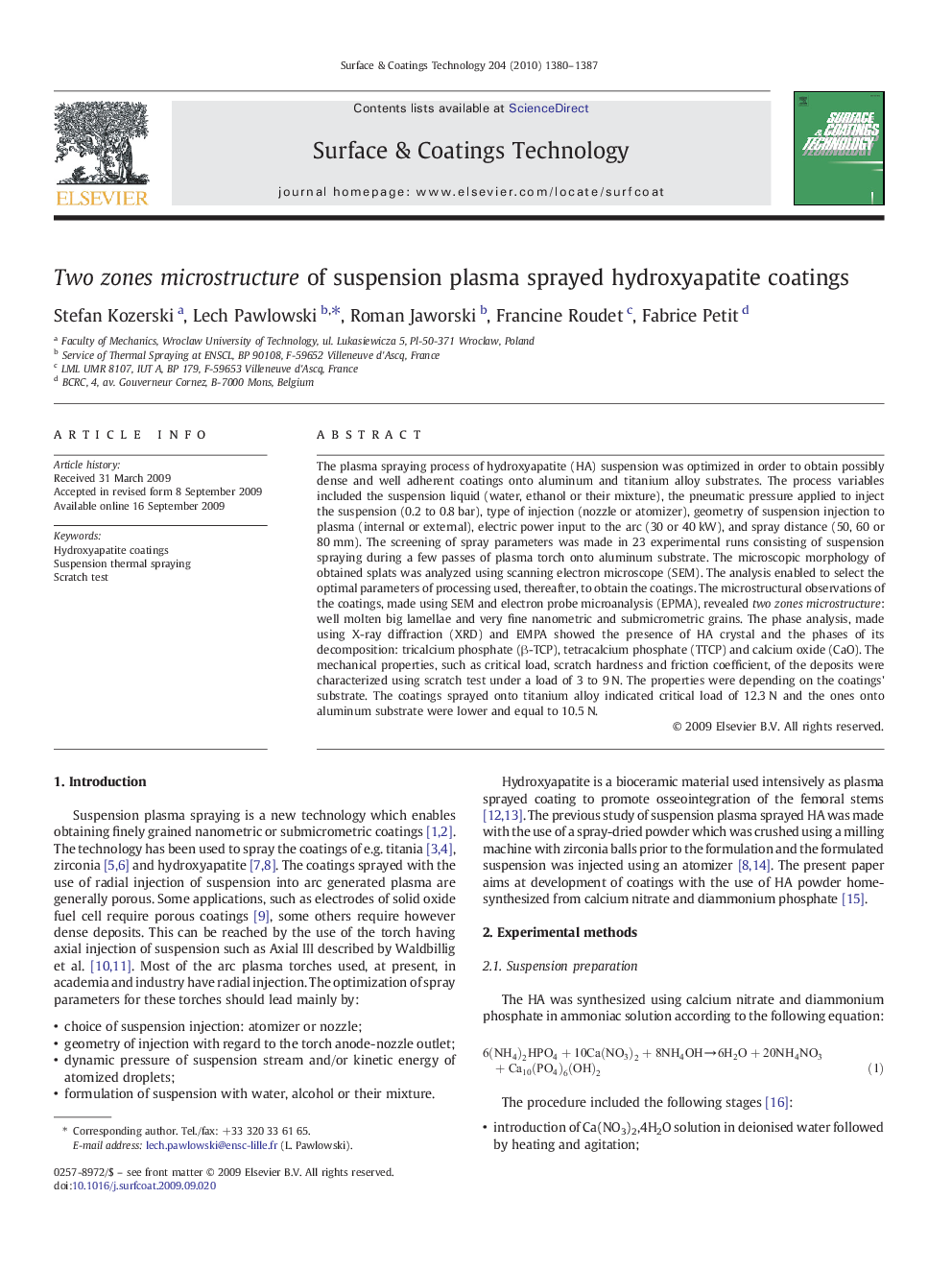| Article ID | Journal | Published Year | Pages | File Type |
|---|---|---|---|---|
| 1659732 | Surface and Coatings Technology | 2010 | 8 Pages |
The plasma spraying process of hydroxyapatite (HA) suspension was optimized in order to obtain possibly dense and well adherent coatings onto aluminum and titanium alloy substrates. The process variables included the suspension liquid (water, ethanol or their mixture), the pneumatic pressure applied to inject the suspension (0.2 to 0.8 bar), type of injection (nozzle or atomizer), geometry of suspension injection to plasma (internal or external), electric power input to the arc (30 or 40 kW), and spray distance (50, 60 or 80 mm). The screening of spray parameters was made in 23 experimental runs consisting of suspension spraying during a few passes of plasma torch onto aluminum substrate. The microscopic morphology of obtained splats was analyzed using scanning electron microscope (SEM). The analysis enabled to select the optimal parameters of processing used, thereafter, to obtain the coatings. The microstructural observations of the coatings, made using SEM and electron probe microanalysis (EPMA), revealed two zones microstructure: well molten big lamellae and very fine nanometric and submicrometric grains. The phase analysis, made using X-ray diffraction (XRD) and EMPA showed the presence of HA crystal and the phases of its decomposition: tricalcium phosphate (β-TCP), tetracalcium phosphate (TTCP) and calcium oxide (CaO). The mechanical properties, such as critical load, scratch hardness and friction coefficient, of the deposits were characterized using scratch test under a load of 3 to 9 N. The properties were depending on the coatings' substrate. The coatings sprayed onto titanium alloy indicated critical load of 12.3 N and the ones onto aluminum substrate were lower and equal to 10.5 N.
